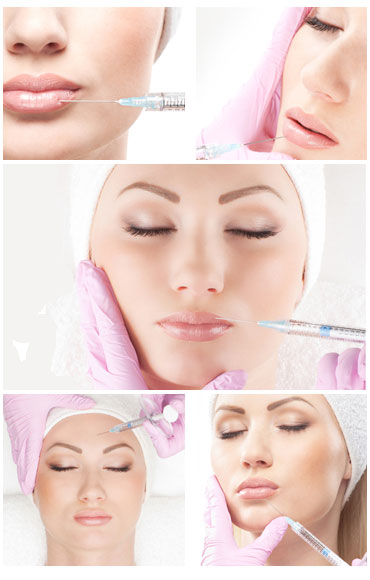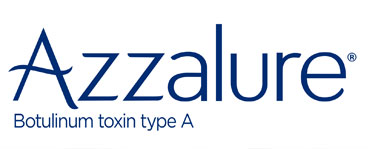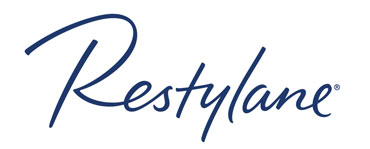


Botulinum toxin is a chemical produced by the botulinum bacterial. Botox is a protein derivative of the toxin, which, when injected into a muscle, causes it to become weakened or inactivated. It stops the muscle from functioning by blocking neuromuscular transmission – i.e. it stops the chemical messages from the nerve to the muscle.
The treatment known as BOTOX® has been approved for cosmetic use. It is ideal for easing over-active muscle movement that can cause deep frown lines and crows feet. It can also be used to reduce excess perspiration 'Hyperhidrosis'.
Lines and wrinkles can be minimised by using a purified protein produced by Clostridium Botulinum bacteria which induces long-term relaxation of contracted muscles. This product was originally used to treat eye spasms and central nervous system disorders.
This treatment has been used on over 1 million patients worldwide for almost 20 years and is supported by a wealth of long-term safety data.
As long ago as 1978, Botox was used as a treatment for patients with eye squints by weakening the overactive eye muscle. Since then, it has been used in a variety of therapeutic areas such as spasmodic neck, writer’s cramp, tics, multiple sclerosis, facial spasm, Parkinson’s Disease and cerebral palsy, to name but a few. In more recent times the use of Botox for cosmetic therapy has become more widespread.
Line and wrinkle treatments are commonly used to treat for areas in the upper part of the face; these treatments can combat both fine lines and also deep wrinkles. The most popular are to treat are:
Line & wrinkle treatments have been used as Cosmetic Treatments since the late 1980's, revolutionising the cosmetic industry due to its remarkable results combined with very few risks and no recovery time. Wrinkle Relaxing injections have been used to treat millions of patients worldwide and is the world's most popular Non Surgical treatment.
Over time, as we naturally age, overactive muscle movement gradually wears away the collagen in our skin, causing the skin to crease and wrinkles to appear. Line & wrinkle treatments relax these muscles, preventing the formation of wrinkles and smoothing out lines. Line & wrinkle treatments work only on the specific muscles injected, leaving surrounding muscles to function as usual, enabling normal facial expression, just with less wrinkles.
The procedure takes about 5-10 minutes. The practitioner will ask you to use certain muscles of the face to observe how they work. An extremely fine, short needle is used to inject the Botox into the appropriate area. This may cause some slight but brief discomfort. The area may have some slight redness and swelling, which normally resolves in an hour or two. The treatment normally starts to take effect after 4 – 14 days, but this may vary slightly with some individuals. The effects will normally last between 2 and 6 months, when you will start to notice an ability to move the muscles more freely.
This treatment is only administered by Doctors who have been fully trained in its use.
You may wish to visit the following link for more information: Department of Health - www.dh.gov.uk
Line & wrinkle treatments are ideal for anyone who has concerns about forehead creases, frown lines or crows feet. The treatment still allows expressions to show on the face which is why many patients feel they do not have to tell work colleagues, friends or partners that they are having treatments.
Many people choose to have line & wrinkle treatments to look fresher, less tired, less stressed and ultimately younger. It's always a good idea to prevent wrinkles rather than having to deal with them as and when they appear and this is where the treatment is so effective.
Line & wrinkle treatments are incredibly versatile and can be combined holistically with other treatments (such as dermal fillers) to encompass total rejuvenation of the face; this is why it is so important to attend a Registered Clinic so that you can be given all the information to make an informed decision about your unique treatment plan.
It's also a great starter treatment if you've never had a Cosmetic Treatment before and can be wonderful to add the finishing touch to both post brow lift and face lift surgical patients.
No, prior to your treatment you will have a consultation where all your questions are answered and you are assessed for your suitability to proceed.
Because a very fine needle is used, most patients find that there is only mild and temporary discomfort.
The entire procedure usually takes no longer than 10 minutes and is only administered by the Doctor who is fully trained in its use.
You will probably not need to have another treatment for around 3-4 months. Following repeated treatments, the effects tend to last for a longer period of time. Your Doctor will discuss with you the results which you can expect to see and advise repeat treatments that will be suitable for you. If you have a good initial result, please note that, as recommended by the manufacturers of the treatment, we aim not to perform any "top-up" treatments within a 3 month period following your treatment.
If your original lines are not too deep, you should notice a significant reduction in the depth and length of your original lines treated after one year, as the skin has a chance to regenerate without constantly being creased by the underlying muscles.
If your lines are very deep, the Doctor may also discuss the additional use of dermal fillers or other complementary treatments to get the best possible result.
Side effects of line & wrinkle treatments are rare - indeed it is one of the safest Cosmetic procedures available.
Side effects of this treatment are rare. Occasionally a temporary drooping of the eyelid can occur. This may last a few weeks, but will always resolve. Special eye drops can be prescribed during this time to help lift the lid back into the normal position. In extremely rare cases patients have developed an allergy to the treatment, while others have shown resistance, i.e. it causes little or no effect on the treated muscles.
However, there is the possibility of inadequate injection technique resulting in the treatment being injected or dispersed by massaging the area, this can cause a temporary weakness and is why it's so important to have your treatment at a clinic which is registered by The Healthcare Commission (the independent inspection body for both the NHS and independent healthcare industry).
When the treatment begins to work, you may notice some temporary strange "sensations" around the treated areas as the muscles that have not been injected adjust.
Line & wrinkle treatments are the only treatment that directly tackles the cause of dynamic lines by weakening the muscle that causes the skin to wrinkle. Dermal fillers, which are injected just below the surface of the skin into the line or wrinkle aim to temporarily fill the line.
Resurfacing procedures such as skin peels or medical microdermabrasion are examples of other techniques that can be used to reduce the visibility of wrinkles.
Line & wrinkle treatments are often used in combination with other treatments (such as dermal fillers.)
Studies have not been performed on women who are pregnant or breastfeeding. Although treatments are not thought to be dangerous, treatment is best avoided during this time.
If you have any diseases, involving nerve damage or muscle weakness, line & wrinkle treatments are not recommended. It is also important to let your Doctor know if there is a family history of such diseases - for example Myasthenia Gravis or if you have previously suffered from Bell's Palsy.
Patients who are currently being treated with amino glycoside antibiotics or spectinomycin should wait until they have completed their course of treatment, and anyone who has had an allergic reaction to human albumin should not have line & wrinkle treatments.
Hyperhidrosis is a condition where the body produces excessive amounts of perspiration, and can leave the affected areas constantly damp, making everyday activities difficult to carry out, and causing embarrassment to the sufferer.
Collagen is a natural protein that is the main constituent of skin, bones, muscles and ligaments. Over time, our collagen cells which provide the structural support, resilience and shape to the skin, reduce in number which causes the skin to lose elasticity allowing fine lines and wrinkles to develop.
Collagen Replacement Therapy using dermal fillers make it possible to temporarily suspend and even reverse the signs of ageing. Following treatment, wrinkles are markedly and visibly reduced and lines in the skin, repaired. The suppleness, elasticity and tone of the skin is naturally restored, with immediately visible results.
Dermal fillers are popular treatments for wrinkles and facial lines. A dermal filler procedure helps to 'fill out' and smooth away troublesome:
Dermal fillers are also effective for increasing fullness to narrow lips, enhancing sunken cheeks and can even be used to contour the bridge of the nose.
Historically, collagen fillers, which were derived from cow hide, have been very popular but these have now been largely replaced by more technologically advanced man made fillers (such as Restylane and Teosyal), which are specifically designed for each area enabling the treatment to be administered quickly with very little 'down time' or recovery time. As these man made fillers are animal-free they also require no test prior to treatment, whereas approx 2-3% of people have an allergic reaction to collagen and as such we carry out a 28-day skin test, prior to any collagen treatment.
There are a wide variety of dermal fillers available and we will need to assess your skin carefully before selecting the correct filler for you.
Dermal fillers are an ideal treatment for anyone who has concerns about their lines or furrows from the nose to mouth area, 'crows feet', lines around the eyes, or lines around the mouth. Many patients also choose to have this treatment to plump up thin lips, restoring a nice youthful look. Patients who would like to redefine and soften the contours of their face also turn to dermal fillers as the results are so natural and subtle.
The beauty of this treatment is that your Nurse Therapist can give you as much or as little dermal filler as you need to give you a softer, smoother face, which will leave you with a lovely natural improvement.
We offer the option of dental blocks and topical anaesthetic for pain free dermal filler lip treatments. The dental block is a safe local anaesthetic which is applied prior to receiving a dermal filler lip treatment.
Prior to any dermal filler treatment, a mild anaesthetic cream is applied to the treatment area for your comfort. The dermal filler is then injected into the skin beneath the wrinkle with a very fine needle. You may need a small injection to numb the area prior to the filler injections.
Some fillers are now available with local anaesthetic in them so depending on the treatment you will be having the doctor may choose to administer this.
A dermal fillers treatment can be very quick and effective and have a minimal impact on your time. It takes 20-40 minutes depending on the number of lines and wrinkles treated. Make-up can be applied immediately after a dermal filler treatment and you can go straight back to work. It is common to have some redness and swelling following the treatment, although this usually resolves after a few hours and the results can be seen instantly.
You will probably not need to have another treatment for around 4 - 6 months. Your fully qualified Cosmetic Counsellor will advise you to return to the clinic after a couple of weeks to see how you are getting on and whether you need to have some more filler injected to achieve the optimum result.
A great advantage of dermal filler treatments is that they are long-lasting, but not permanent, which gives you the option to reassess your needs, once the initial effects have worn off.
Is the treatment carried out in just one visit? No, It's essential that you attend for a consultation prior to your treatment so that a tailor made treatment programme can be started. Your Nurse Counsellor will be able to advise you on the treatment plan which is most suitable for you to achieve your desired results. They will run through all of this information in thorough detail with you at your consultation and will assess your suitability for this treatment.
If you have any concerns or further questions relating to dermal fillers please visit Revitaskin Price List